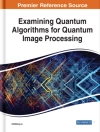How many times have you seen a web site and said, “This would be exactly what I wanted— if only . . . ” If only you could combine the statistics here with data from your company’s earnings projections. If only you could take the addresses for those restaurants and plot them on one map. How often have you entered the date of a concert into your calendar with a single click instead of retyping? How often do you wish that you could make all the different parts of your digital world—your e-mail, your word processor documents, your photos, your search results, your maps, your presentations—work together more seamlessly? After all, it’s all digital and malleable information—shouldn’t it all just fit together? In fact, below the surface, all the data, web sites, and applications you use could fit together. This book teaches you how to forge those latent connections—to make the Web your own—by remixing information to create your own mashups. A mashup, in the words of the Wikipedia, is a web site or web application “that seamlessly combines content from more than one source 1 into an integrated experience. ” Learning how to draw content from the Web together into new integrated interfaces and applications, whether for yourself or for other others, is the central concern of this book.
Tabela de Conteúdo
Remixing Information Without Programming.- Learning from Specific Mashups.- Uncovering the Mashup Potential of Web Sites.- Understanding Tagging and Folksonomies.- Working with Feeds, RSS, and Atom.- Integrating with Blogs.- Remixing a Single Web Application Using Its API.- Learning Web Services APIs Through Flickr.- Exploring Other Web APIs.- Learning Ajax/Java Script Widgets and Their APIs.- Making Mashups.- Moving from APIs and Remixable Elements to Mashups.- Creating Mashups of Several Services.- Using Tools to Create Mashups.- Making Your Web Site Mashable.- Exploring Other Mashup Topics.- Remixing Online Maps and 3D Digital Globes.- Exploring Social Bookmarking and Bibliographic Systems.- Accessing Online Calendars and Event Aggregators.- Using Online Storage Services.- Mashing Up Desktop and Web-Based Office Suites.- Using Microformats and RDFa As Embeddable Data Formats.- Integrating Search.
Sobre o autor
Raymond Yee is a data architect, consultant, and trainer. He is currently a lecturer at the School of Information�of the�University of California at�Berkeley, where he teaches the course ‘Mixing and Remixing Information’. While earning a Ph.D. in biophysics, he taught computer science, philosophy, and personal development to K-11 students in the Academic Talent Development Program on the Berkeley campus. He is the primary architect of the Scholar’s Box, software that enables users to gather digital content from multiple sources to create personal collections that can be shared with others. As a software architect and developer, he focuses on developing software to support learning, teaching, scholarship, and research. Raymond is an erstwhile tubaist, admirer of J. S. Bach, Presbyterian elder, aspiring essayist, son of industrious Chinese-Canadian restaurateurs, and devoted husband of the incomparable Laura.












